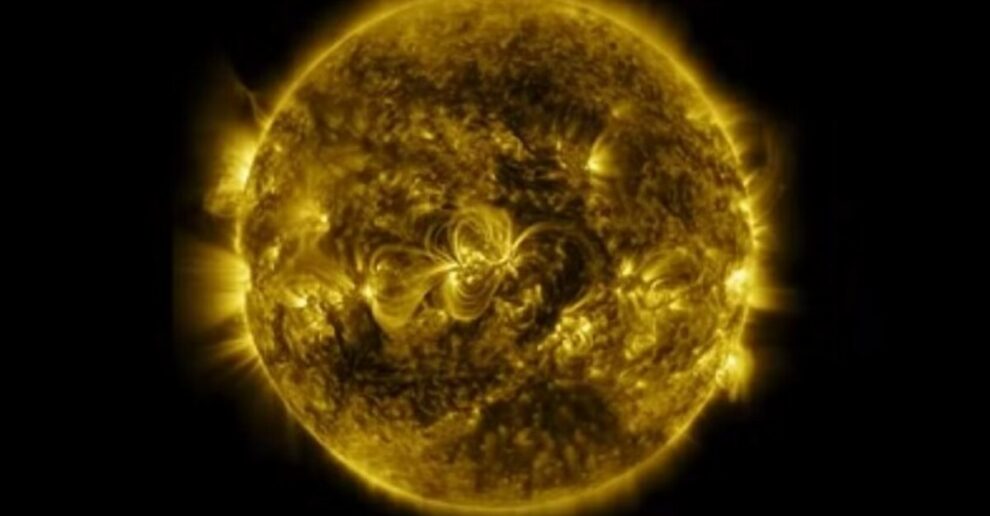Space weather forecasters reported a potent M-class solar flare causing a high-frequency radio blackout event on Tuesday. Multiple eruptions from the Sun have led to geomagnetic storm watches for later this week, Fox Weather reported.
The NOAA Space Weather Prediction Center revealed that the M9.8 solar flare, recorded by NOAA’s GOES-19 satellite, resulted in a moderate HF Radio Blackout Event Tuesday. Potential HF radio degradation was anticipated over the eastern part of the South Pacific Ocean during the flare. Due to recent solar activity, the forecast suggests the possibility of more M-class flares and a slight chance of X-class flares, the most powerful on NOAA’s scale.
Solar flares are categorized by strength, with M and X-class flares being the strongest. An X-class flare, the most significant explosion, can generate energy equivalent to 1 billion atomic bombs, according to NASA. The SWPC indicated that additional solar eruptions are directed towards Earth. Three coronal mass ejections (CMEs) occurred on Sunday, propelling plasma clouds from the Sun toward Earth. The arrival of solar particles is expected, with potential impacts starting as early as Wednesday evening, presenting a “potential glancing blow” or “near-Earth.” Subsequent rounds of solar wind, described as “at least glancing blows,” are anticipated by Thursday.
NOAA uses a 5-point rating scale for solar storms (G1 to G5), with models suggesting G1 (minor) levels on Thursday and G2 (moderate) levels on Friday due to additional CMEs. NOAA’s space weather forecasters use solar observing instruments on satellites to monitor the Sun and forecast space weather. After a solar eruption, computer models aid in predicting when particles are expected to reach Earth’s atmosphere. While a geomagnetic storm may not affect most individuals, a strong (G3) storm can cause intermittent disruptions to satellite navigation and low-frequency radio navigation. NOAA issues space weather forecasts to assist spacecraft operators and power providers in preparing for potential impacts.
For the public, a solar storm can be exciting as charged particles colliding with Earth’s atmosphere create the aurora borealis, or Northern Lights. These dazzling lights are typically observed around the poles but can extend to lower latitudes during a robust solar storm. NOAA’s Aurora Dashboard indicates the likelihood of faint aurora lights in the Northern U.S. starting Wednesday night. Recent solar storms in November resulted in vivid displays of the Northern Lights as far south as the Carolinas. The increased geomagnetic storms and aurora activity align with the rising solar activity as the Sun approaches the Solar Maximum in the 11-year solar cycle. The latest SWPC forecast for Solar Cycle 25 places the solar maximum in January-October 2024.
